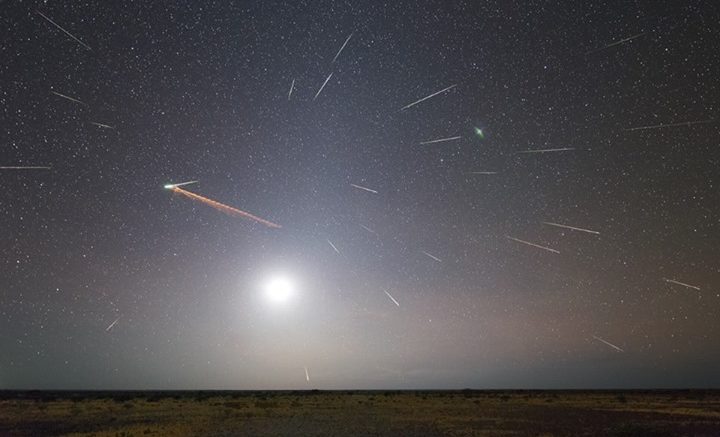Over the course of the year, there are many meteor showers visible to the people. A meteor shower is a celestial event in which a number of meteors are observed to radiate, or originate, from one point in the night sky. These meteors are caused by streams of cosmic debris called meteoroids entering Earth’s atmosphere at extremely high speeds on parallel trajectories. We are going to look at the meteor showers for viewing, where they can be seen, and much more. Throughout the year, there are 12 meteor showers, which are broken down in the table below.
| Meteor Shower | Average Meteors Per Hour | Maximum Meteors Per Hour During Peak | Range Of Dates | Constellation Source |
| Quadratids | 25 non peak | 60-200 | December 28-January 12 | Bootes |
| Lyrids | 10-15 | Theoretically 100 | April 16 to April 26 | Lyra |
| Eta Aquariids | 10-20 | 10-20 | Roughly April 19 to May 28 | Aquarius |
| Delta Aquariids | 15-20 | 10-20 | July 12 – August 23 | Aquarius |
| Perseids | 20 non peak | 100 | July 17 – August 24 | Perseus |
| Draconids | 5 | Hundreds or thousands* | October 6 – October 10 | Draco |
| Orionids | 10-20 | 20 | October 2 – November 7 | Orion |
| South Taurids | 5 | 5 | Sep 10 – Nov 20 | Taurus |
| North Taurids | 5 | 5 | Oct 20 – Dec 10 | Taurus |
| Leonids | 15 | 15 | November 6 – November 30 | Leo |
| Geminids | 10-20 | 120 per hour | December 4-17 | Gemini |
| Ursids | 10 | 10 | December 17–24 | Ursa Minor |
*=This is under special circumstances only, when the comet Giacobini-Zinner comes closest to Earth when the peak of the meteor shower occurs. This happens every 6.6 years.
That said, there are specific places to best view specific meteor showers. This can be seen with the Quadratids best seen from the Northern Hemisphere, whereas the Eta Aquariids are best seen from the Southern Hemisphere or near the equator.
The best way to view a meteor shower is to bring a comfy seating, proper clothing to stay warm and layered as appropriate, and drive to a site that has a view of the sky that includes the view of the sky that the constellation will be in that most of the meteors will originate from during the observing session. Plus, the darker the skies, the better chance of viewing the most meteors during the viewing session.
Favorite seating can include a chair if alone or a towel if there are several people in the group. Make sure to bring appropriate red light to make sure that one can find the way back to the car or mode of transport safely. Remember to always clean up after yourself. We do NOT recommend leaving trash or recycling at an observing site. If one does bring food, please make sure to be aware of any local wildlife such as cougars, bears, and such that could be attracted to such food. Therefore, it is recommended to NOT bring food and if food is necessary, make sure to eat it in the car.
For more information about specific meteor showers, feel free to check out this NASA’s website on the topic or our articles above.

Leave a comment